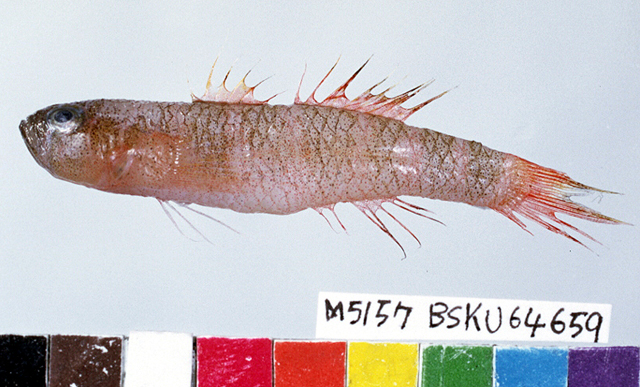| Gobiidae (Gobies), subfamily: Gobiinae |
| 3.02 cm SL (male/unsexed); 3.19 cm SL (female) |
|
demersal; marine; depth range 40 - 95 m |
| Northwest Pacific: Japan. |
|
Dorsal spines (total): 7-7; Dorsal soft rays (total): 9; Anal spines: 1-1; Anal soft rays: 8-8. This species is distinguished from its congeners by having the following characters: well developed transverse pattern of sensory-papillae rows on cheek; papillae in anterior transverse interorbital row (ATI) 4 and papillae in posterior transverse interorbital row (PTI) 12; lateral line scales 28-29 ; predorsal scales 14-15; ctenoid scales 3 on upper part of opercle and long and slender gill-rakers on outer first arch without denticles on inner rim; pelvic fins with a vestigial membrane, no frenum; body pinkish (like a cherry blossom); vertical fins red; dark bands on body 6 (Ref. 75864). |
| Inhabits sandy bottom at depths between about 40 and 100 m (Ref. 75864). |
|
Not Evaluated (N.E.) Ref. (130435)
|
| harmless |
Source and more info: www.fishbase.org. For personal, classroom, and other internal use only. Not for publication.

